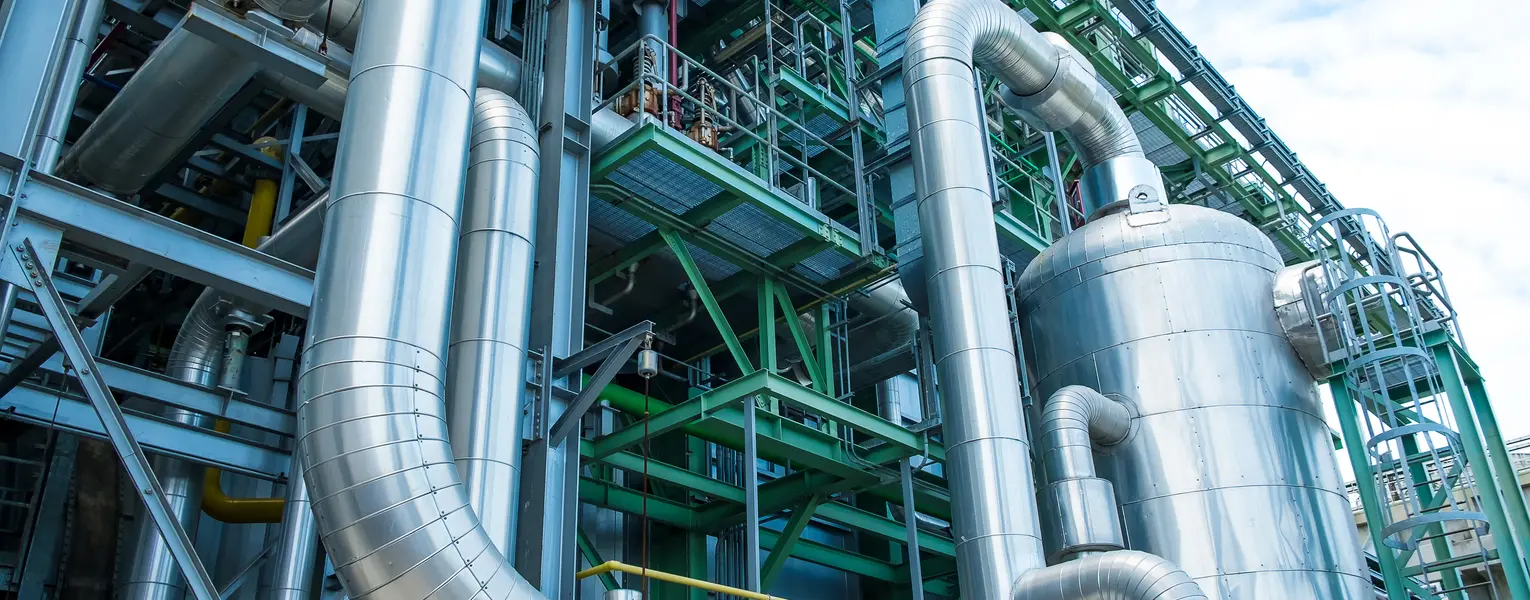To perform API 618 pulsation analyses or transient fluid modeling (in general), Southwest Research Institute (SwRI) utilizes a full Navier Stokes solution in one-dimension, which can be analyzed in time or frequency domain. The full one-dimensional time-domain flow solver, named Transient Analysis Pulsation Solver (TAPS), is applicable to any complex manifold and piping system and was developed internally by SwRI. To date, TAPS is the most comprehensive physical model in the industry.
Boundary conditions include:
- Velocity or pressure constants
- Time-varying excitation functions
The reciprocating compressor is modeled in TAPS as a velocity varying boundary condition at the speeds and operating conditions provided by the operating company. The transient flow solver includes all terms of the governing equations including:
- Fluid inertia
- Diffusion
- Viscosity
- Energy dissipation
The model is a finite difference numerical solution of the Navier Stokes equations.
All compressor cylinder gas passages, nozzle geometries and manifold bottles are modeled and discretized within the solver. This model is then used to determine the natural acoustic response modes of the fluid piping system, the excitation frequencies and the resulting pulsation amplitudes and frequencies.
The state of the fluid in a piping system is determined by two factors:
- The kinematics of the forcing inlet boundary condition to the piping system
- The fluid dynamic behavior (response) of the fluid within the piping system and the passive outlet boundary condition.
Pressure losses inside the pipe and at the interfaces are determined from friction loss models and viscosity losses are directly calculated from the discretized viscosity term of the momentum equation (in the flow direction); these two terms are applied at every time step at every applicable node. Boundary end-conditions, such as open ended pipe, closed pipe, or infinite pipe also must be defined but are relatively straight forward to determine from basic physics.
3D Cylinder Gas Passage and Nozzle Pulsation
Analysis in the areas near the compressor suction and discharge valves, a 3D model of the fluid domain is often necessary to accurately characterize the various acoustic responses of the gas passage and the passage area combined with the nozzle and filter bottle. The 3D pulsation analysis is conducted using a detailed solid model of the cylinder gas passage typically provided by the original equipment manufacturer (OEM).
The gas passage solid model is combined with a cylinder nozzle and the geometry of the primary chamber of the filter bottle. The fluid domain of this 3D geometry is meshed and analyzed using ANSYS and ANSYS CFX. The two solutions in combination provide an accurate prediction of the frequencies and relative amplitudes for all relevant gas passage internal responses and cylinder nozzle responses. The results can be used to develop a one-dimensional (1D) cylinder gas passage representation for the 1D pulsation analysis that uses modeling software (TAPS) based on the Navier Stokes equations. The results can also be used to design a filter system with well-placed nozzle responses.
We can offer you the best approach for solving your compressor system or pump system analysis problem. Contact us for more information about our TAPS design tool capabilities. To contract with SwRI, please contact the Machinery Services Hotline at +1 210 522 3000.
For more information, contact Eugene "Buddy" Broerman or call +1 210 522 2555.

